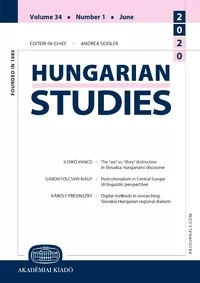Between East and West: Hungarian and the Volga-Kama Sprachbund
Between East and West: Hungarian and the Volga-Kama Sprachbund
Author(s): Jeremy Bradley, Nikolett F. GulyásSubject(s): Finno-Ugrian studies
Published by: Akadémiai Kiadó
Keywords: Hungarian; Volga-Kama Sprachbund; areal linguistics; contact linguistics; language history
Summary/Abstract: While the Hungarian language is spoken in the heart of Europe, both scientific and pseudoscientific explanations trace its origins to the East. Also structurally, Hungarian shows many structural features more reminiscent of more Eastern languages. This paper examines the relationship of Hungarian, genealogically and contact-linguistically, with more Eastern languages, both related (e.g., Mansi, Khanty, Mari) and unrelated (i.e., the Turkic languages). Historical records strongly imply that a variant of Hungarian, East Hungarian, was spoken in the Volga-Kama Region of European Russia until the 13th century, lexical evidence (i.e., borrowings) also strongly imply that historic migration took the linguistic ancestors of modern Hungarians through this area. Yet, much remains unknown about these processes: there are no written records of East Hungarian or of Hungarian predating the arrival in the Carpathian Basin in the 9th century, hence, all evidence is indirect. In this paper, we give a brief overview of what is known and what is not known about the relationship of Hungarian with the languages of the Volga-Kama Region: What evidence do we have of historical contacts, from lexicon and language structure? For which structural features of Hungarian have scholars postulated a possible contact-linguistic explanation, possibly showing linguistic heritage Hungarians brought from the Volga-Kama Region to the Carpathian Basin?
- Issue Year: 37/2023
- Issue No: 1
- Page Range: 123-139
- Page Count: 17
- Language: English
- Content File-PDF

